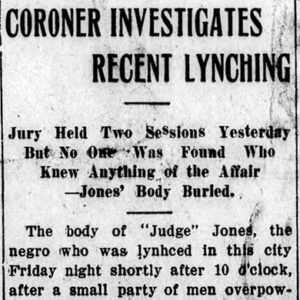 Judge Jones Lynching Article
Judge Jones Lynching Article
Entry Type: Event
 Judge Jones Lynching Article
Judge Jones Lynching Article
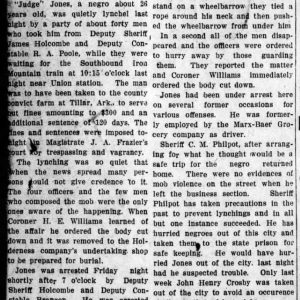 Judge Jones Lynching Article
Judge Jones Lynching Article
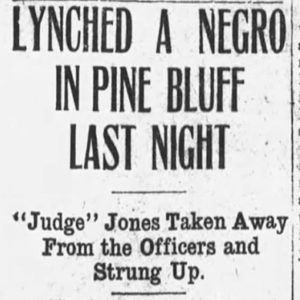 Judge Jones Lynching Article
Judge Jones Lynching Article
Jonesboro Church Wars
 Jonesboro Lynching Article
Jonesboro Lynching Article
Jonesboro Lynching of 1881
aka: Greensboro Lynching of 1881
Jonesboro, Skirmish at
Jonquil Festival
 Bob Jordan Lynching Article
Bob Jordan Lynching Article
Jordan, Bob (Lynching of)
Juneteenth
 Juneteenth; 2018
Juneteenth; 2018
 Juneteenth; 2018
Juneteenth; 2018
 Juneteenth; 2018
Juneteenth; 2018
Kahl, Gordon (Shooting of)
aka: Smithville Shootout
KATV Broadcast Interruption of 1959
Kees, Willie (Lynching of)
 Tammy Keith
Tammy Keith
Kemp, Joseph (Execution of)
Kendal’s Grist Mill, Affair at
Kennedy, James (Lynching of)
 James Kennedy Lynching Article
James Kennedy Lynching Article
Key, Lee (Lynching of)
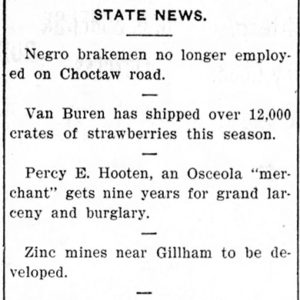 Lee Key Lynching Mention
Lee Key Lynching Mention
Kickapoo Bottom, Skirmish at
aka: Skirmish at Sylamore (May 29, 1862)
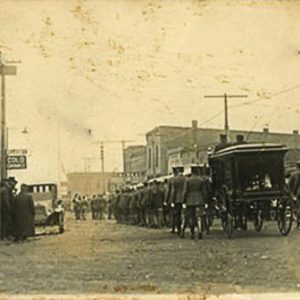 Field Kindley Funeral
Field Kindley Funeral
King Biscuit Blues Festival
aka: Arkansas Blues and Heritage Festival
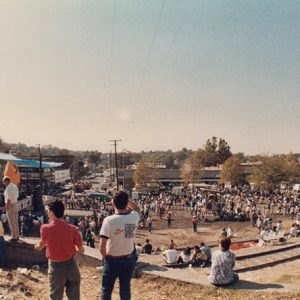 King Biscuit Blues Festival Crowd
King Biscuit Blues Festival Crowd
 Frank King Lynching Article
Frank King Lynching Article
King, Frank (Lynching of)
King’s River, Skirmish at
Kingston, Skirmishes at
Kirkendall, Mose (Lynching of)
Kirkland, John (Lynching of)
Kitts, James (Execution of)
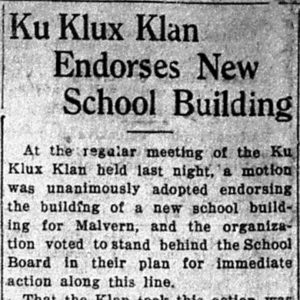 KKK School Endorsement Article
KKK School Endorsement Article
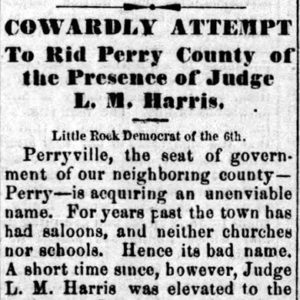 KKK Threats
KKK Threats
Klepper’s Sawmill, Skirmish at
aka: Skirmish at Clapper's Sawmill
Knight’s Cove, Skirmish at
 KTHS Control Room
KTHS Control Room
 KTHS Ad
KTHS Ad
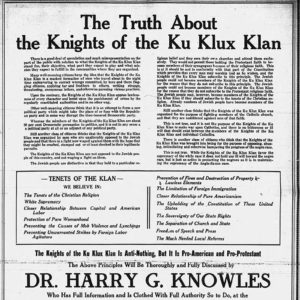 KKK Ad
KKK Ad
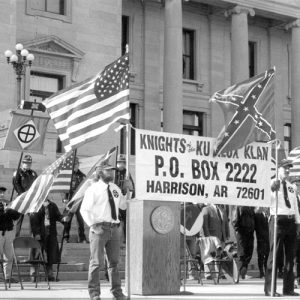 Ku Klux Klan Rally
Ku Klux Klan Rally
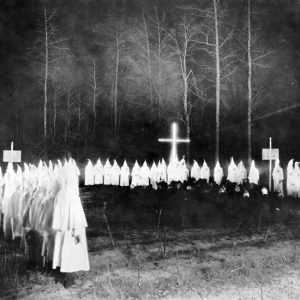 Ku Klux Klan Rally
Ku Klux Klan Rally
L’Anguille Ferry, Skirmish at
Labor Day Bombings of 1959
Lacey, Nathan (Lynching of)
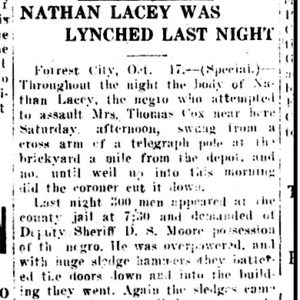 Nathan Lacey Lynching Article
Nathan Lacey Lynching Article




